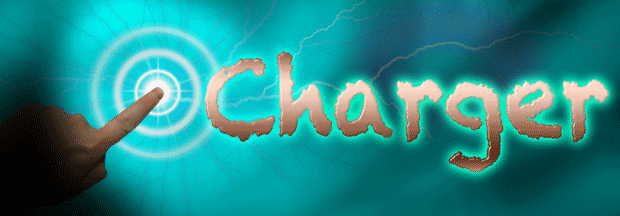A rechargeable battery would be worthless without a charger, more properly known as an ac/dc converter. What a charger does is straightforward enough: It uses alternating current to charge a direct current battery. That’s the wired form of charging. Charging can also be done wirelessly, as articles by Mouser and Intel show.

Wired and wireless charging are accomplished using magnetic induction between two coils. Mouser describes Qi (pronounced ”Chee”), a charging method based on magnetic induction between two coils, one in the charging pad (transmitter) and the other coil in the mobile device (receiver).Intel’s charging bowl employs magnetic resonance technology, which is a kind of induction.
So Nikolai Tesla’s theory is now reality. In 1894, Tesla used resonant inductive coupling, also known as “electro-dynamic induction” to wirelessly light up phosphorescent and incandescent lamps . In 1897 he patented a device called the high-voltage, resonance transformer or “Tesla coil.” Transferring electrical energy from the primary coil to the secondary coil by resonant induction, a Tesla coil is capable of producing very high voltages at high frequency. The improved design allowed for the safe production and utilization of high-potential electrical currents, “without serious liability of the destruction of the apparatus itself and danger to persons approaching or handling it.”
Chargers and rechargeable devices have been plagued with incompatibility from device to device, an issue settled with a series of standards. Peter Chadborne described a solution in Electronic Products in 2010:
“Governments and forums have developed guidelines to eliminate much of this waste [resulting from incompatible chargers.] China, through YD/T 1591-2006 'Technical Requirements and Test Method of Charger and Interface for Mobile Telecommunication Terminal Equipment,' created a requirement that cell phones must be charged from a USB charger.
“Other countries and bodies around the world have also begun standardizing toward a single charger. In 2009, the Open Mobile Terminal Platform (OMTP) forum published the recommendation “Common Charging and Local Data Connectivity” to propose a single interface for data transfer and charging, namely the micro-USB interface. In June 2009, the European Union signed memoranda of understandings with several major cell phone makers and chipset providers to have all phones sold in the EU to support charging and data transfer through a micro-USB interface as well.
“[These trends] also apply to many different portable devices, as application markets converge. Other portable devices these trends apply to include MP3 players, personal media players (PMPs), and GPS devices. These devices all use data, audio, and power interfaces.”
T he chief applications for charging, both wired and wireless, are portable communication devices and electric vehicles. Here are two harbingers of the future:
- A Saratoga, CA high school student designed a supercapacitor that allows for recharging a cell phone in seconds.
- And market research firm IDTechEx is reporting continuously on the progress in charging electric vehicles.
And, of course, there's still more to come.
Advertisement
Learn more about Electronic Products Magazine





